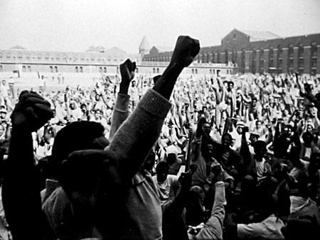Alex Constantine - July 27, 2009
 Daniel Carpi. Between Mussolini and Hitler: The Jews and the Italian Authorities in France and Tunisia. The Tauber Institute for the Study of European Jewry Series 17. Hanover, N.H.: University Press of New England, 1994. ix + 342 pp. Notes, bibliography, index. $49.95 (cloth), ISBN 0-87451-662-5.
Daniel Carpi. Between Mussolini and Hitler: The Jews and the Italian Authorities in France and Tunisia. The Tauber Institute for the Study of European Jewry Series 17. Hanover, N.H.: University Press of New England, 1994. ix + 342 pp. Notes, bibliography, index. $49.95 (cloth), ISBN 0-87451-662-5.
Reviewed by Guillaume de Syon, Albright College.
H-Net Reviews
Published by H-France (July, 1997)
On January 4, 1939, German Ambassador Hans Georg von Mackensen met with Benito Mussolini to discuss the treatment of Jews in Italy and left with the assurance that Italian anti-Jewish legislation, first enacted in 1938, would soon be toughened up. Despite such discussions carried out time and again between German and Italian officials, Fascist Italy is considered to this day a "special case" in the history of the Holocaust, in that Jews fared better under Mussolini than under other Fascist regimes, thanks in part to the Italian population's complacent behavior and in spite of the government's anti-semitic policies. The story remains ambiguous, however, due to the varying positions of local Italian authorities, as shown in Italian-Jewish memoirs and scholarly studies.[1] The issue becomes even more complex when examining the status of Jews in Italian-occupied territories. One such case, that of southern France and Tunisia between 1940 and 1943, when Mussolini fell from power, is the subject of Daniel Carpi's remarkable study.
Divided into three parts to cover different administrations, Carpi's work considers Italian interactions with German administrators and with Vichy authorities in southern France and in Tunisia. As the author defines it early on, Italian political maneuvering was the factor of two important variables. The first was Italy's protection of its citizens, including Italian Jews, in occupied territories (including those where German authorities were present) for economic reasons. The second factor was the peculiarity of Italy's war effort, based in part on an autonomous foreign policy which called for the annexation of certain territories. These included the French areas east of the Rhone river as well as Tunisia. Hence, both factors would dominate relations with French and German authorities in these occupied territories, and would, for a while at least, serve to afford some protection to Jews living there.
Whereas in the first two years of World War II, misunderstandings and disagreements over the implementation of racial laws in territories occupied by Italy and Germany could be overlooked, by the summer of 1942, the German decision to deport all Jews from occupied territories regardless of nationality caused a quasi-open rift between Fascists and Nazis. It is true that Italy yielded rather quickly to German pressure in the case of Croatia and Greece, but when the same request came from both German and Vichy authorities about Italian Jews in France, the matter was quite different and complex, which is the reason for Carpi's focus.
German-Italian relations in the matter of deportations remained ambiguous until the fall of Mussolini (September 1943), in part because of the behavior of individuals involved in the decision-making process. Matters were further complicated by the fact that while Fascist policy against Italian Jews on Italian soil had been legally applied since 1938 (when the "Manifesto of the Italian race" was published), a different attitude emerged regarding Italian Jews on foreign or occupied territory. The intervention of Italian authorities in favor of "their" Jews was a matter of primarily economic concern: when the threat of aryanization (confiscation of Jewish property by the Nazi authorities) loomed, the Italian government interpreted this as an attack on its sovereignty. According to Carpi, Jews were viewed as contributors to Italian economic life around the Mediterranean and thus were potentially useful for ensuring Italian influence as a whole. This pragmatic stance, rather than a humanitarian one, seems to have dominated Italian officials' conduct on Jewish deportations from foreign territories. Of course, another reason for Italian officials' ambiguous behavior, to which Carpi only alludes, may have been confusion over the interpretation of Italian law. As legal analyst Olivier Camy recently noted, Italian racial legislation concerning occupied territories was confusing and even contradictory, whether it sought to incorporate the tough rules in place in Ethiopia and Libya, or to take into account economic necessity.[2]
Generally, then, the initial Italo-German dispute over the Jews took place in occupied and Vichy France and resulted in a rejection of German proposals either to repatriate Italian Jews or deport them to the east. On the other hand, the Italian foreign ministry did consent to socio-economic restrictions and to the requirement that all Italian Jews wear the Star of David. But by then, the Italian negotiating position had begun to weaken as the Allies landed in North Africa, threatening Italian military positions in the Mediterranean. The fall of Mussolini changed the situation completely as German authorities took over control.
In the French areas occupied by Italy, Carpi argues that the Italian authorities remained generally disinterested in enforcing measures against Jews, at least until massive deportations from Vichy France began in 1942. The Italian Consul in Paris, Gustavo Orlandini, then intervened with the German authorities to obtain the liberation of the Italian Jews who had been taken into custody. Still at the time, the Italian government had never officially indicated what policy it was following, tending to act on a case-by-case basis. The dynamic changed again when the Vichy zone was invaded in November 1942 and a further Italian occupation area was established in southeastern France. The Italians then informed both German and French authorities that they would control all matters pertaining to "their" own area: even though the French administration remained in place and functioned according to Vichy directives, every major decision would first have to be cleared with the Italian officials.
Soon after, a struggle between Vichy and Italian representatives ensued about the transfer of non-French Jews out of the Italian zone and into the German one. Through the intervention of the Italian Consul in Nice, Alberto Calisse, and in Rome of the Jewish banker, Angelo Donatti (who represented the interests of the Italian Jewish community), all non-French Jews (not just Italian ones) became exempted from any measures which Vichy sought to apply. This Italian action, in Carpi's view, could only have occurred if officials in both the Italian occupation zone and in the Italian foreign ministry were disposed to disregard Vichy and German laws concerning Jews on Italian-held territory. The critical result was the buying of valuable time for Italian authorities--and obviously for Jewish refugees--in dealing with both Vichy and German counterparts until the Italian armistice on September 8, 1943 when German troops and members of the Parti populaire français began their round-ups.
A pattern of antagonism similar to the one between Vichy, German, and Italian authorities also existed between French and Italian authorities in Tunisia. This section of Carpi's study is the most informative, casting new light on conditions in French North Africa. There, a split of opinion led the French Petainistes to fear Italian domination while Jews hoped for it. Following the landing of Axis troops in Tunisia in late 1942 (to parry an Allied attack), the Italians took strong and successful action to protect the approximately 5,500 Italian Jews in Tunisia (the Germans, fearing a rift, agreed to their allies' demands), although they did not protect Jews of other nationalities (contrary to what occurred in southern France). This contradictory policy poses the question, which Carpi does not consider, of how similar or dissimilar such conduct was to the Italian treatment of Jews in Libya, where racial legislation was strictly enforced, also affecting some Italian Jews. This wider frame of reference would shed further light on the peculiarities of Italian Jewish legislation, for example, by showing in what way official behavior may have reflected, or not, the apartheid-like laws of 1937 applied in other Italian-dominated areas (such as Ethiopia).
Aside from a couple of misspellings of proper nouns, the translation from Hebrew reads well and the scholarship fills a gap in the historiography of Fascist behavior in the Holocaust. This thorough investigation is at times exceedingly complex because of the intricacies of tri-national political relations in a period of world war. One wishes that Carpi had taken additional space to explore further some of the motivations of the Italian officials in going the extra step to save certain Jews and not others. As he himself points out throughout this exhaustive study, protection of the Jews by the Italians went beyond political and economic considerations, yet the personalist aspect remains beyond the scope of what Carpi set out to do in his otherwise excellent book.
Notes
[1] Primo Levi's Survival in Auschwitz (1959); Nicola Caraciolo's Uncertain Refuge (Urbana, 1995.)
[2] See "La doctrine italienne," in Le droit de Vichy (Paris, 1995), pp. 469-539.
Copyright © 1996, H-Net, all rights reserved. This work may be copied for non-profit educational use if proper credit is given to the author and the list.
http://www.ess.uwe.ac.uk/genocide/reviewsh9.htm








